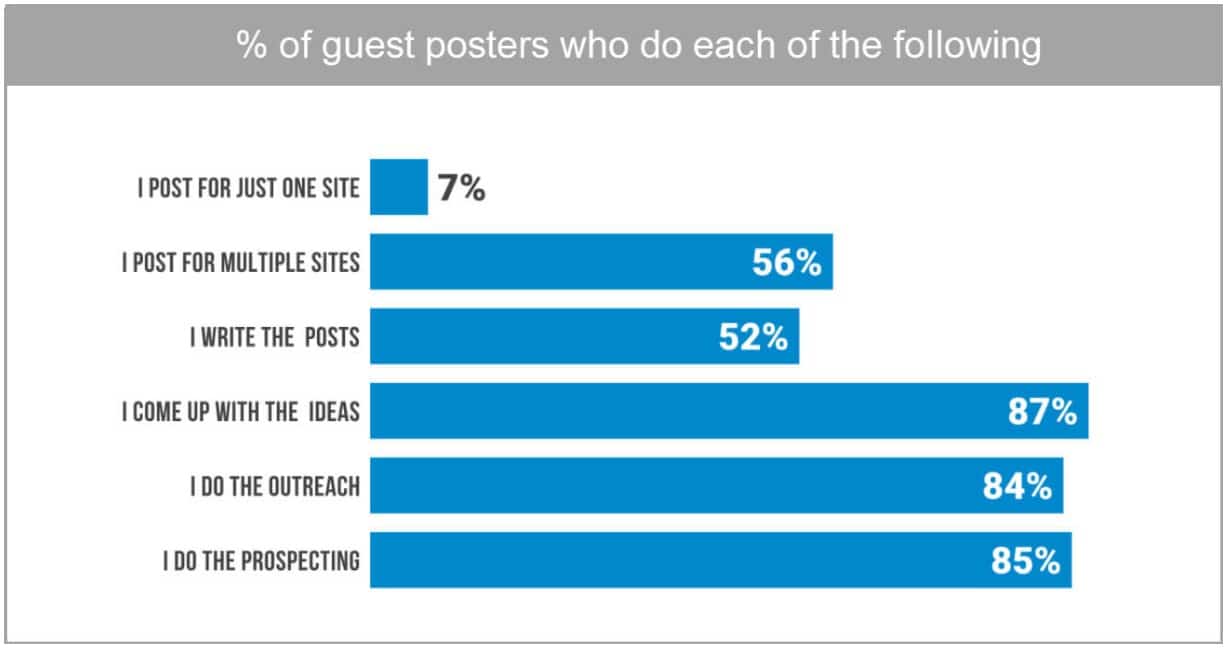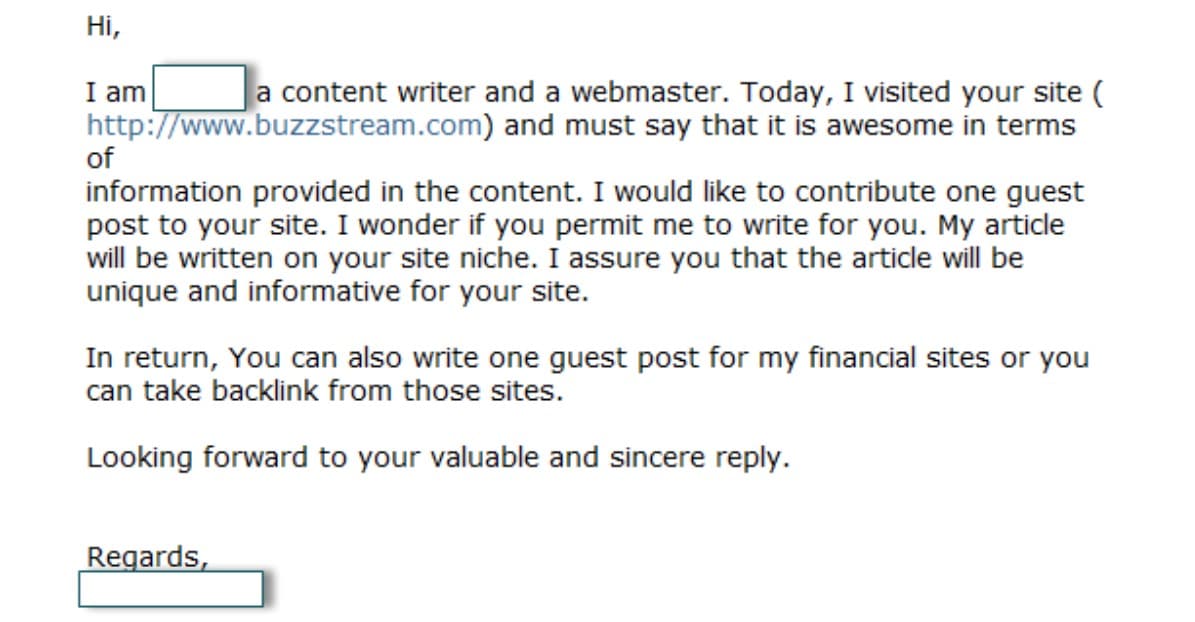Did you know that three-quarters of all online users read blogs in 2023? As one of the leading sources of conversion-driving content, blogs provide marketers a chance to gain quality backlinks, share their expertise and advertise their brand organically.
Not only is a blog a great way to improve your PR content game, but experts also suggest that frequently uploading content to your site and other competing publications can boost your SEO tenfold.
While creating content for your own site may be the easiest route forward as a content writer, it could be time to start reaching your posts to new publications for improved results.

(Image Source: Ahrefs)
Did you know that over half of all bloggers write for multiple sites? Offering your content to industry blogs and traffic-driving publications can help expand your audience reach, boost your brand credibility and potentially filter more leads to your checkout.
The question is, how do you start guest blogging? While you may have the perfect piece written, it’s actually the pitch that makes all the difference. Whether you’re looking to go freelance or boost your brand’s PR game, stick with us as we jump into the world of hyper-personalized pitching, and teach you how to achieve guest posting success.
Research the target blog
One of the classic mistakes new guest bloggers make is a lack of research. While your target blogs may drive traffic, they must be relevant to your industry if you’re going to see backlink success.
“Start by looking for publications that have the same target audience as yours. When that happens, you don’t have to put in any extra effort to promote your business. Just focus on creating posts around your product or service that create value for your audience,” says Josh Kohlback, CEO of Wholesale Suite. “If you can create valuable content, even the mention of your business or a link to one of your products can add huge value to your brand.”
Some of the key things to cover when conducting target blog research are:
- Target audience: Does the blog or publication have the same target audience as you? If you share the same demographic, these readers will be more likely to engage with your content.
- How active is the blog?: You’re looking for a publication that is frequently posting content. The more active the blog is within your industry, the more traffic it will drive.
- Can you build a relationship?: One of the best ways to conduct a successful guest posting campaign is to build strong B2B relationships. Can you partner with this brand in future campaigns? Would you allow them to add a guest post to your blog in return?
- Monitor the traffic sources: While it is important to find a blog with high numbers of active traffic, it’s even more crucial to delve deeper into a blog’s traffic sources. For example, if you’re an English brand that can’t ship globally, ensure that your guest post appears on a blog with primarily UK-based traffic sources for maximum conversion potential.
Once you’ve narrowed down your outreach list, it’s time to start researching each individual publication’s editorial style and the posts that have driven the most traffic so far. This will make pitching just that bit easier, as you can learn exactly what the publication is looking for.
“Before you pitch your post, you should take the time to analyze the blog in question and understand its editorial style, its stance on your topic, and its goals,” claims BuzzStream’s SEO strategist, Matt Gratt. “Then, you can offer something mutually beneficial – instead of “1000 words of unique content for a backlink.”
Personalize your introduction
Now you have your target publication in mind. It’s time to start pitching your content. When it comes to pitching a guest post, personalisation is everything. Every blog editor receives hundreds of guest pitch emails a day, so it’s vital to make yours stand out.
“A great guest post pitch—like any great email—is personalized, positioned, and persuasive. It shows the blog owner or editor how your content will help him or her accomplish their goals,” continues Gratt.
Ensure that you’re taking time to reference previous work that you have admired on the blog and even hyperlink this if you want to make your pitch extra special.

(Image Source: BuzzStream)
As you can see in the example above, the gust pitch highlights a hyperlink to the blog in question and is positioned, personalized and persuasive.
“Use the blog owner’s name in your pitch to show that you’ve done your homework.
If you really care about getting your article published, then you must understand that your relationship with the editor is just as important, if not more important, as the quality of your writing,” explains Neil Patel, founder of NPDigital.
Last but not least, don’t forget about your subject line. This is the first snippet of your pitch the editor will see, so make sure it sits boldly within their inbox. Steer clear of generic phrases such as ‘guest post proposal’ or ‘blog pitch’. Instead, jump straight into the title and/or the problem your content addresses.
Tailor your content ideas
Next, it’s time to start sharing your content ideas. The key here is to start small and work your way up to a piece of content. Instead of sharing a finished guest post, why not approach an editor with a list of potential titles to choose from?
In fact, 52 percent of businesses engaging in guest posting campaigns will only come up with topics/titles before outsourcing the content writing to a partnering guest posting agency. This allows the brand to be in direct contact with blog editors while allowing content writing experts to craft valuable insights for optimized publishing.
Another way to ensure success when pitching is to personalize your pitch to adhere to the blog’s individual guidelines.
“The most effective way to boost your odds of success is to make sure you’re following the guidelines. Website owners and editors set specific rules for people who want to contribute to their websites,” says Chris Christoff, co-founder of Monster Insights. “If your email is a garbled mess and you clearly didn’t follow their directions, again, your email will end up in the trash.”
Don’t forget to showcase your expertise
Last but not least, don’t forget to sell yourself. Remember, you’re providing publication with valuable insights free of charge. Don’t forget to showcase your expertise and let an editor know why your content is a great choice for their blog.
“The best way to promote your business in a guest post is not to be promotional. Instead, focus on educating your audience about something in the industry they are not aware of. This means writing on areas of your true expertise and speaking from real-life examples. Also, always remember to have a link back to your site somewhere in the content,” states Kelsey Raymond, CEO of Influence & Co.
Include samples of your previous work within your pitch and share links to your current blog or well-performing socials. If you frame yourself as an authoritative voice within your industry, you’ll be treated like one.
While creating a personalized pitch may be time-consuming, the benefits outweigh the efforts. The more relationships you build with key names within your industry, the easier it will become to share your insights site-wide.







